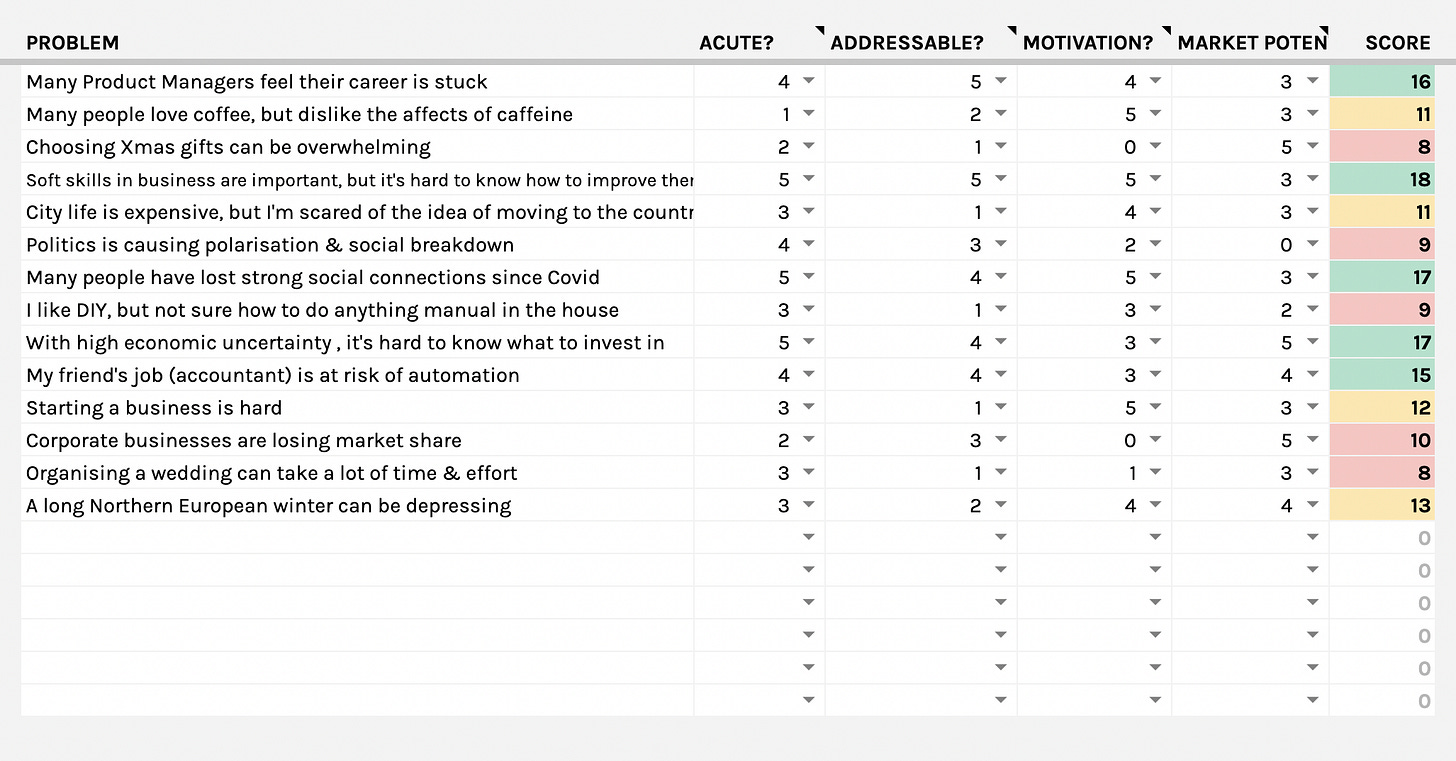How to Find Product Opportunities With AI
5 Lessons From My journey Building an AI-driven Product Business...
Product management = risk management.
Risk is ultimately the real purpose of your role.
Why?
In a world where 90% of products fail, there are endless dangers you need to navigate in order to give your product any chance of success.
I haven’t launched a business for a few years now, since starting Prod MBA as a solopreneur 3 years ago.
However, I’m now embarking on the journey of launching a new business and it’s been refreshing to be confronted by the reality of an early-stage product again - and to follow the principles & frameworks I teach in our Prod MBA bootcamp.
To actually live by what I teach, rather than only frequenting the realms of theory, like too many academics & teachers.
In this article series, I’ll share personal lessons learnt from building an AI-driven product business.
(BTW, if you’re interested in making high-impact presentations in minutes, join our Beta here!)
Part 1: Pick The Problem You Choose to Solve VERY Carefully
Just because you see a big opportunity with AI - similar to the early days of the internet - does not mean you should just rush into just building ANYTHING & sprinkling AI on top of it!
Every product starts with a deep understanding of the market & what specific problem that market needs solving.
Beyond just defining what problem it is you need solving & for whom, that means assessing whether this is in fact a good problem to solve based on these 4 factors:
How acute is the problem? If you’re not solving an acute problem, everything is a hell of a lot harder. Why? Because that market won’t be motivated to check out your offer, sign up, test out the product - let alone use it regularly & pay for it!
How addressable is the market? If you can’t consistently get access to these people, you could have the best product in the world, but you won’t find anyone to actually use it. From Day 1, even when planning to do product discovery calls, you need to have a consistent way of reaching these people
How motivated are you to solve it? There are great problems to solve, such as “improving the efficiency of train transportation”, but they may be problems you’ve got no interest in solving! If you’re not motivated, move on & find another problem, as the journey as a founder - any product builder in fact - requires resilience, vision & a lot of time & effort. If you’re not motivated to solve something, you’ll give up
Do you see market potential? Specifically, for market growth & revenue? Although we don’t need to follow the management consultancy approach of putting together endless spreadsheets about revenue & growth potential - forgetting in the process to actually create value with an MVP - it’s worth pausing just to think about where you could take the product. Which new markets could you expand to after you gain early success? Do people pay for these kind of products? How competitive is the market?

Our Story of Trying to Find The Right Problem
A month ago, us 3 co-founders started our journey identifying as many problems as possible & assessing them based on the 4 factors listed above.
We saw a lot of potential in the problem of “Lack of personalisation means re-engaging or re-selling to customers is hard” & we thought it was an acute problem for Customer Success Managers.
Some initial research supported this, as it’s the main job of customer success or retention to maximise revenue from existing customers, which ultimately affected the company’s bottom line.
The problem?
Addressability!
We just couldn’t consistently find someone who had this problem. In some companies, it was in fact the responsibility of a Product Manager, others Customer Success, others Customer Retention. Most companies didn’t even respond, suggesting no interest in the offer.
So, rather than stressing about it, we asked ourselves:
Where can we find other acute problems but with a more addressable market?
Having posted on LinkedIn every day for 3 years, I’ve built up a big following amongst Product Managers & leaders on the platform. And that’s where we decided to start.
Again, following our belief that quality ideas come from quantity, we listed out 20 or so problems we felt Product Managers face:
We then assessed acuteness, addressability, motivation & market potential for each one before seeing a lot of potential in the problem of “presentation creation taking a lot of time”.
Rather than endless debating or analysis, this week we decided to simply put an offer - what we call a Minimal Viable Offer - in front of our target market & see whether there was interest, as well as gathering some survey answers to help us inform what we might focus on in terms of our product strategy & initial prototype.
The results are exciting, but I’ll leave that for next week - and give you step-by-step advice on how to build & test an AI-based value proposition.
Interested in saving time & building high-impact presentations in minutes?






